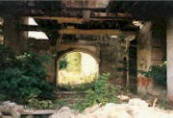3: Aims of the website

This lack of published works on the Victorian Turkish bath has influenced the format which has been adopted. Most unusually for a website—and some might say unwisely—an attempt has been made to adopt a booklike treatment.
Its homepage is its contents page; the search engine its index. After an introduction, there are six sections with individual articles or chapters, two of the latter being designed as extensively annotated directories. For those interested in the sources used, there is a full bibliography, supplemented by footnotes throughout, and the large number of illustrations have their own index.
 While such an approach may seem to set aside the advantages of the 'traditional' website, from feedback received, it seems that while many do visit the site merely to find a local Turkish bath, a surprising number of visitors are interested in specific articles and in the whole concept of a virtual encyclopaedia.
While such an approach may seem to set aside the advantages of the 'traditional' website, from feedback received, it seems that while many do visit the site merely to find a local Turkish bath, a surprising number of visitors are interested in specific articles and in the whole concept of a virtual encyclopaedia.
And while it may be easier to relax with a traditional book, the website has been adopted as a form of progressive, on demand, publishing. The site is based on a databank many times larger than the site in its present form, so articles tend to get written in response to the interests of visitors, or in the course of answering queries received.
But the website is, above all else, an attempt to interest historians in an aspect of Victorian life which has been almost totally forgotten and which is virtually uncharted. It will attempt to strike an acceptable balance between academic rigour and the wish to tell a story which is interesting to read. As in any account which treats of the lives of real people, we shall find tragedy—as when we read of the inquest into the death of the Urquharts' thirteen month old baby in their own Turkish bath; there is a touch of the macabre—as in the discovery by the young Robert Service of a rotting body in a disused cooling-room; there is a touch of sadness—when we see the overgrown ruins of once famous establishments; we uncover minor dishonesty (or, perhaps, admire brilliant public relations)—as we unravel the truth about Charles Bartholomew and the myth of his trial by the doctors of Bristol; we may be amused—as we read the sometimes vitriolic newspaper correspondence between the protagonists of the damp-air baths and those of the dry-air baths; and we may be surprised—as we find Turkish baths featured in music, paintings, novels, plays, poems, and films.
It is hoped, then, that the site will trigger an interest in the Victorian Turkish bath among local studies librarians, social historians, and all who are interested in the history of their locality or their family. For them, the site includes an Information Exchange. The more people use it, and contribute their own information, the more comprehensive the story of the Victorian Turkish bath will become, and the more wide-ranging will be the aspects of Victorian life touched upon.

